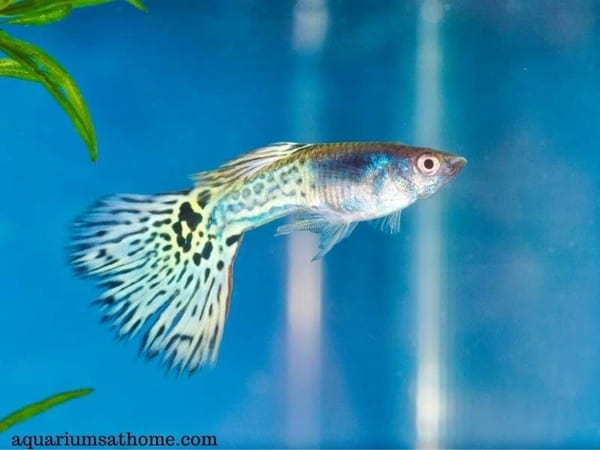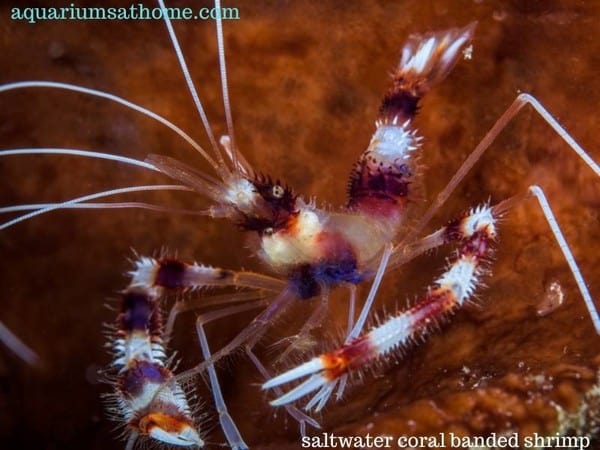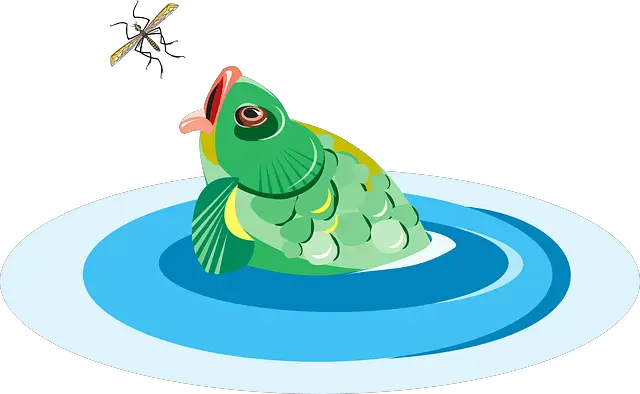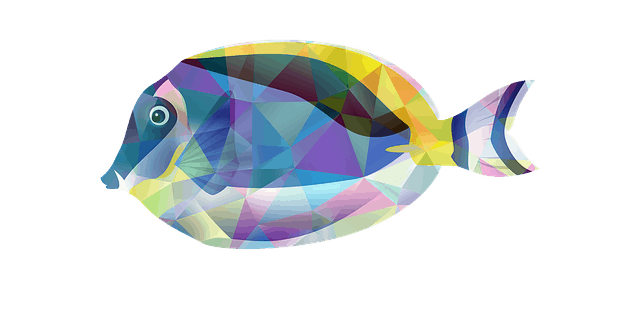Shrimp are a wonderful addition to any aquarium, whether it be freshwater or saltwater. Not only do they look ‘cool’ skirting around the bottom of the tank, but they also help keep the aquarium clean by scavenging on uneaten food, decaying plants and algae overgrowth. Perhaps you’ve considered adding shrimp to your tank and are curious as to which fish can be kept with them? Well, the answer is…
Small, non-aggressive species of herbivorous fish (and some type of omnivorous fish) can be kept with aquarium shrimp, provided the water conditions are conducive to all aquatic inhabitants. Carnivorous fish should not be kept in the same tank as shrimp. True shrimp enthusiasts, however, will often set-up a separate fish-free tank for their crustaceans.
Now that you know peaceful, plant-eating fish make the best tank mates for aquarium shrimp, let’s dive deeper into this topic. Moving through this article, I’ll explain what species of both freshwater and saltwater fish can be kept with shrimp in a captive environment. I’ll also discuss the benefits of adding shrimp to your tank and how to care for them.
So, if you’re ready to learn more about keeping shrimp and fish together in the same tank, then let’s get started!
Will Aquarium Fish Eat Shrimp?
Keeping shrimp in a tank with fish can be tricky since shrimp are a natural part of the fish food chain. Most large and medium-sized aquarium fish won’t hesitate to feast on crustaceans sharing the same aquatic environment. The ‘rule-of-thumb’ is if the creature is small enough to fit in the fish’s mouth, then it’s fair game! Therefore, it’s imperative to keep shrimp with smaller fish that prefer to eat plants.
What Fish Won’t Eat Shrimp?
Herbivorous or plant-eating fish won’t eat shrimp in a captive aquatic environment. Some omnivorous (plant- and meat-eating) fish can be kept with shrimp in a community tank, provided the fish are small, docile and fed well. Carnivorous or meat-eating fish tend to be aggressive feeders and shouldn’t be kept in the same aquarium with shrimp.
What Fish Can be Kept with Cherry Shrimp?
Cherry shrimp are a type of freshwater crustacean and a popular choice among aquarium hobbyists. They come in wide range of colors and can reach lengths of up to 2 inches. The best tankmates for cherry shrimp include cory catfish; neon and ember tetras; harlequin rasboras, white mountain cloud minnows, and most species of aquarium snails.

Can I Keep Guppies with Shrimp?
Guppies and shrimp can be kept together in the same aquarium. However, as omnivores, guppies often eat shrimp so caution must be taken. Ensuring the tank is large enough and heavily planted will help. Feeding guppies high-quality food twice a day should keep them full and away from shrimp. As well, the ratio of guppies to shrimp should be ‘less than’ to prevent guppies from teaming up and hunting shrimp.
Can Fighting Fish Live with Shrimp?
In most cases, fighting fish such as bettas can be kept with shrimp in a community tank environment. However, you must keep in mind that bettas are often territorial and aggressive in nature. For the two to co-exist peacefully, the tank must be large, heavily planted and contain lots of hiding places. Ghost shrimp are a great choice as they’re not too small, easy to care for and like to keep to themselves.
What are the Best Fish to Keep with Shrimp in a Freshwater Tank?
Regarding freshwater fish, the best tankmates for aquarium shrimp include the following:
- guppies – if keeping a school of guppies, make sure the total number is less than the amount of shrimp you have in tank. Guppies, by nature, eat shrimp and will hunt them in larger groups. If the tank is large with plenty of hiding places, this should help reduce the risk.
- danios – celestial pearl danios, for example, are small enough to co-exist harmoniously with adult shrimp. Be careful with baby shrimp, however, as danios have been known to make a meal of them should the opportunity present itself.
- tetras – neon and ember tetras make great tankmates for shrimp. They’re too small to eat juvenile or adult shrimp (baby shrimp, on the other hand, is a different story). As well, tetras prefer to swim in the middle of the tank as opposed to the bottom where shrimp often dwell.
- cory catfish – pygmy cories are another type of ‘shrimp-safe’ fish. Although they’re omnivores, they often won’t eat aquarium shrimp if they’re food supply is plentiful. As is the case with fish like guppies, keeping more shrimp than cories in the tank is recommended.
- rasboras – harlequin rasboras are docile and prefer to keep to themselves in a community tank environment. Since they don’t eat shrimp, they make great tankmates for shrimp of all ages – even fry. Easy to care for, rasboras are the perfect choice for a shrimp-friendly aquarium.
- gouramis – sparkling gouramis, for example, are smaller than other species of gourami fish and do well with shrimp in a captive environment – provided the tank is heavily planted with lots of hiding places throughout.
- plecos – bristlenose plecos are herbivorous algae-eaters and as such, won’t eat shrimp in an aquarium. A heavily planted tank is a must, however, since shrimp have been known to eat pleco eggs in a captive environment.
- loaches – kuhli loaches won’t eat juvenile or adult shrimp, making them a great choice for tankmate. However, they may snack on bite-sized fry if they’re not fed enough. An aquarium with lots of plants and hiding places will help keep baby shrimp safe from scavenging loaches.
What are the Best Fish to Keep with Shrimp in a Saltwater Tank?
When it comes to marine shrimp (including cleaner, banded coral, harlequin, pistol, and peppermint shrimp), the best fish for a saltwater aquarium include angelfish, blennies, butterflyfish, cardinalfish, clownfish, damselfish, tangs, and wrasses. Stay away from reef fish as they tend to eat crustaceans as part of their natural diet.

Are Shrimp Good for an Aquarium?
Shrimp are great creatures for an aquarium. Not only do they add color and interest to any community tank, but they also help keep it clean! In fact, there’s a type of saltwater shrimp referred to as a ‘cleaner shrimp’ for its innate ability to eat or ‘clean up’ what is often deemed as waste material in a tank such as leftover food, decaying plant matter, excess algae, etc.
How to Care for Aquarium Shrimp?
Aquarium shrimp tend to be easy to care for, provided the water conditions are well-maintained. While each species may require slightly different parameters, there are a few criteria necessary for both fresh and saltwater shrimp alike.
Begin by ensuring the tank clean. Install a high-quality filter and do partial water changes (10-20%) once a week. Feed shrimp two or three week with enough food to consume in a 2-minute time period. Algae rounds, spirulina flakes, and shrimp pellets will help supplement their scavenging, bottom-feeding diet.
Shrimp don’t like fast currents so avoid adding powerheads to your pump’s filtration system. If you feel the current is too strong with standard equipment, try placing plants near the outlet to help diffuse air flow and slow water movement.
If you plan to breed aquarium shrimp, ensure the water temperature is stable though slightly higher than usual. Feed them high-quality, protein-rich foods and add extra plants for sustenance as well as cover. Most importantly, ensure the tank is void of predations including crabs and carnivorous fish.
Conclusion
To sum things up, small and docile species of plant-eating fish can be kept with aquarium shrimp – so long as the aquatic environment is safe and beneficial for all inhabitants. Meat-eating or aggressive fish should not be kept in the same tank as shrimp, whether that be fresh or saltwater. True shrimp ‘lovers’ prefer to set-up crustacean-only tanks, free of predatory fish or other possible endangerments.
I trust this article has answered your questions regarding aquarium shrimp and what fish to keep them with. Thanks for reading and good luck with your fresh or saltwater tank.
Recommended Posts
How To Breed Peppermint Shrimp (Complete Guide)
What Fish Are Good for a 1.5 Gallon Tank?
Shrimp Like Creatures in My Fish Tank (How to Get Rid of Scuds)
Should You Feed Peppermint Shrimp?






